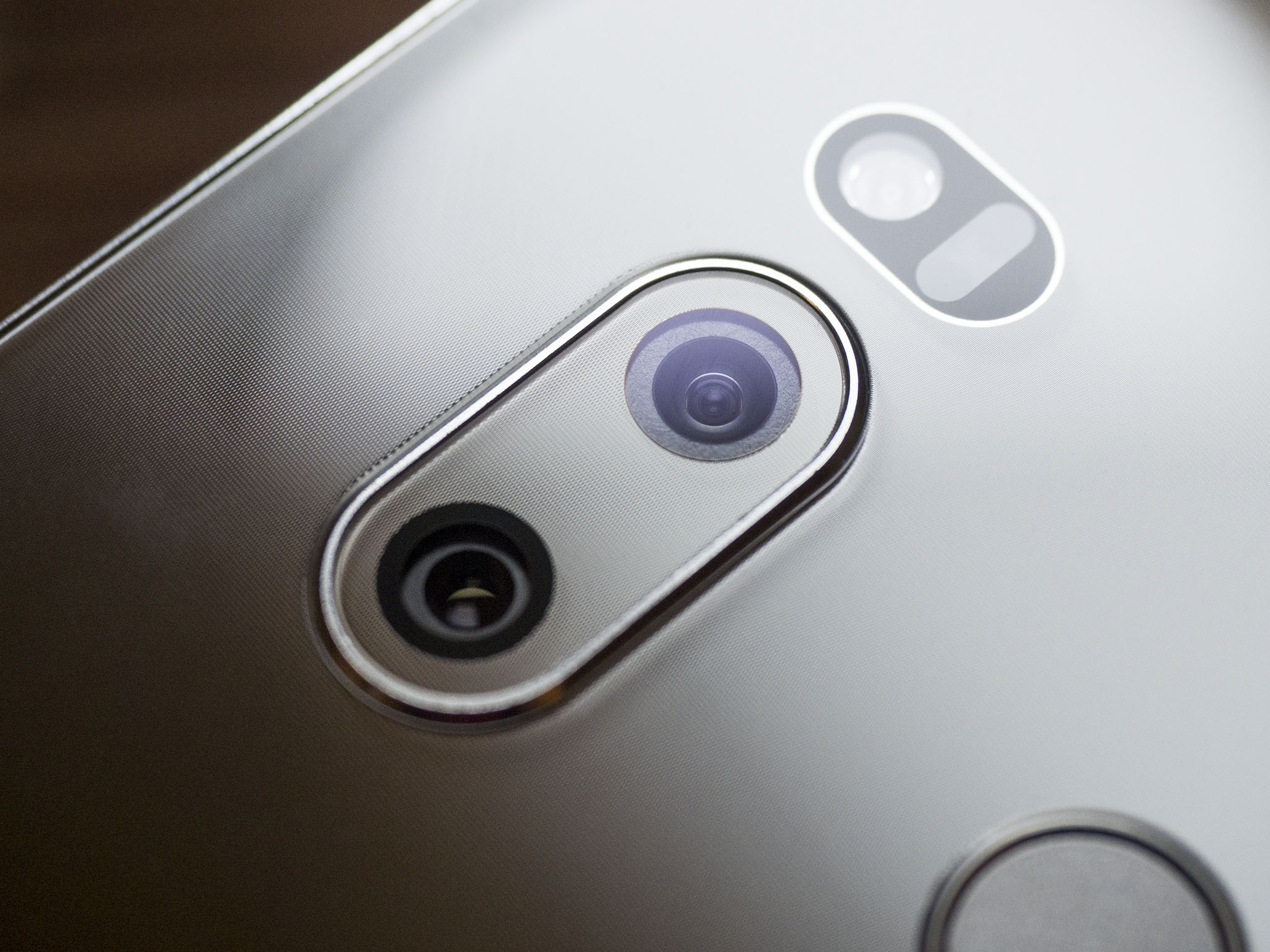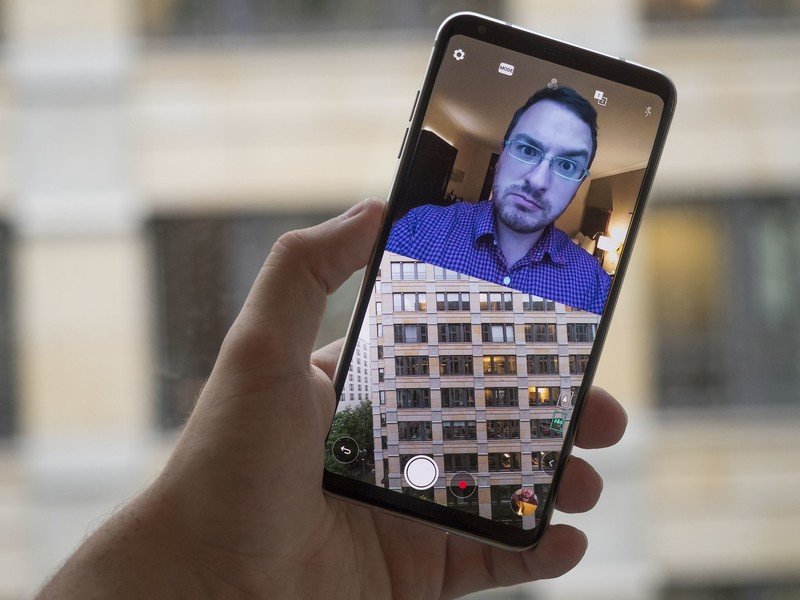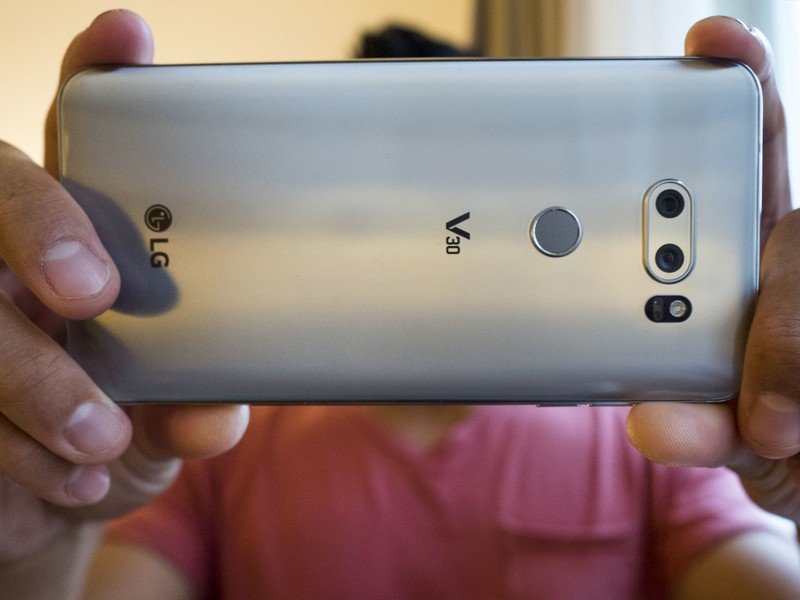LG's focus on the V30 cameras is great for pros and amateurs

Almost every phone these days comes with at least an adequate camera. Some, like the Samsung Galaxy S8 have exceptional cameras, but it takes a phone like the LG V30 to say that it was designed with camera buffs in mind. The Galaxy S8's camera truly is exceptional, but it's designed to be great for the average phone user, somebody who just wants to open the camera app, take a few shots, and then tweak it with Instagram and start collecting those likes.
The V30 has ease of shooting quality photos down pat. The camera launches quickly and shoots with no lag, capturing great photos with nearly every press of the shutter button. But for people that want to take the time to frame up their shots and make sure the lighting is just right, the manual options available on the V30 are second to none.
| Category | Range |
|---|---|
| White Balance | 2300K - 7400K |
| Focus Range | 571mm - ∞ (main camera only) Automatic, Manual with Focus Peaking, or Tracking |
| Exposure Value adjustment | -2.0 - +2.0 |
| ISO | 50 - 3200 |
| Photo Shutter Speed | 1/3200 second - 30 seconds |
| Video Shutter Speed | 1/3200 second - 1/30 second |
| Video resolution | UHD 26:9 3840x2160 / 1, 2, 24, 30fps FHD 21:9 Cinema 2560x1080 / 1, 2, 24, 30, 60fps FHD 18:9 2160x1080 / 1, 2, 24, 30, 60fps FHD 16:9 1920x1080 / 1, 2, 24, 30, 60fps HD 21:9 1680x720 / 1, 2, 24, 30, 60fps HD 18:9 1440x720 / 1, 2, 24, 30, 60fps HD 16:9 1280x720 / 1, 2, 24, 30, 60, 120fps |
| Video Bit Rate | Up to 52 Mbps |
For the Pros
A number of the V30's headline videography features are carried over from last year's V20. Those include the use of focus peaking when using manual focus, electronic stabilization for video, and tracking focus. There's also something new, and a first for any smartphone: a special recording mode called LG Cine-Log that will get the video nerds really excited.
Focus peaking is a feature typically available on high-end DSLR and ILC cameras, used in conjunction with manual focus. It highlights the portion of the image that is in focus with a green line, allowing the camera operator to easily see what's in focus without having to jog the focus dial forward and back. Focus Peaking is only available on the main camera, as the wide angle is fixed focus.
Steady Recording is LG's implementation of the third-generation electronic video stabilization tech Qualcomm built into the Snapdragon 835 processor. Steady Recording works by cropping in the video on the sensor to provide a surrounding buffer margin of pixels to move the recording area into should shake or bumps hit the camera.
There's a trade-off, though: the buffer margin required on the sensor means that it's only available for standard 1080p HD video — 4K's pixel area demands mean the software cannot crop in enough to provide sufficient buffer space for the stabilization.
Focus tracking is a feature that's long existed on high-end video cameras and is now filtering its way down to smartphones. This feature allows the videographer to select a focus point (tap to focus, here) and the camera will maintain focus on that object even as it moves around the frame and closer and away from the camera. This allows for more dynamic filming, both from motion of the subject, but also in the camera, while keeping everything sharply in focus.
Get the latest news from Android Central, your trusted companion in the world of Android

LG Cine-Log format is possibly the master stroke for video recording on the LG V30. This special video format takes after the popular (with video pros) S-LOG and V-LOG formats you'll find on high-end Sony and Panasonic cameras. If you were to graph the standard video recording brightness and saturation profiles, what'd you'd get would basically be a straight line, with the same value weighting applied to pure black as pure white and 50% gray — all colors and brightnesses are equally represented in the table of values.
In a LOG format, more of that weight is transferred to the middle brightnesses and saturations, giving the videographer more flexibility when editing their footage. It looks rather flat unedited, but when tended to by an experienced video editor you can see much greater dynamic range and image fidelity that might otherwise by lost.
LG's Cine-Log video format is meant for the pros out there, allowing editors more flexibility in producing a quality, professional color balance.
Our early tests with LG Cine-Log have revealed quite a bit of noise in the footage, particularly in the dark at 4K, but noise is hard to avoid at this resolution on a sensor this small (and even high-end Sony S-LOG footage is super noisy in the dark). But then again, the whole point of LOG formats is to give the video editor more control over the final result — if they want to filter out the noise in post production, they're more than welcome to do so, but now they have control over how strongly and in what manner that noise is filtered. LG Cine-Log format is not available on the wide-angle camera which, while not a shock, is also a bit disappointing.
Manual controls offer the same sort of fine-grained control that was present on the V20. You can adjust the shutter speed (a faster shutter will result in sharper footage), ISO (how sensitive the sensor is to light), exposure value compensation (adjust overall brightness), hop into manual focus, and play with the overall blue or orange coloring of the recording by adjusting the white balance.
Hi-Fi Audio controls allows for detailed adjustments to what's recorded by the microphones. The gain slider allows you to adjust the overall volume, LCF (Low Cut Filter) lets you cut out low frequencies (such as HVAC systems, the sound of a train, etc), and LMT sets a maximum volume to prevent loud noises from blowing out an otherwise reasonable recording.

For the rest of us
Beyond all of the pro-level video features, LG has built in a few new enhanced video features for the more pedestrian videographers among us. Those mostly surface in the Cine Video mode (yes, there are three video modes here: Auto, Cine, and Manual).
Point Zoom is an enhanced version of traditional zoom — instead of simply zooming in on the center of the frame, you can specify any point the screen to zoom into. Tap, drag up on the slider to zoom in, and drag down to zoom out. It's worth noting that this doesn't determine the focus point or use tracking focus, so if you move the camera while zooming in, you'll still be zooming in on that point of the frame versus following a subject in the frame. As with any digital zoom, the more you zoom the more the picture quality will rapidly degrade.
Cine Filters are, well, cinematic filters. These let you replicate in-camera a selection of cinematic styles. Some are fairly obvious — "Classic" replicates black-and-white film, including how the color red comes through darker than similarly-bright blues or yellows, while "Flashback" is basically a sepia filter — while others replicate the color grading you'll see in various styles of movies. Want the [blue-and-orange look] of Marvel, Transformers, and DC? Hit the "Summer Blockbuster" filter. Tapping "Romantic Comedy" will give you more reds, "Noir" goes heavy on the blues, and "Thriller" turns down the brightness and washes everything in dark blue. They're all neat effects, and LG thankfully included sliders to let you adjust the intensity of each in case going full Michael Bay wasn't the look you wanted.
All of this combined leads to what should make the single best video-recording smartphone on the market. LG positioned the V20 in that position, and the V30's additions on top of that — Cine-Log, improved lenses, and more — make it a worthy successor.
Oh, and it takes photos, too
While LG has done much to position the V30 as a videographer's delight, they didn't forget that this is also a camera you can use to take pictures. There are a number of modes that will satisfy the needs of nearly all photographers, though your mileage may vary on the usefulness of each, and it's helpful to know what these modes do because the name isn't always descriptive enough.
Auto is exactly what you think and how you'll likely use the camera most of the time: point, then shoot. The phone handles all of the shutter speed, exposure, and focusing for you (though tap to focus is here) and all you have to do is frame up the shot. Auto also encompasses auto video record (tap the red button and video begins) and is the default mode on launching the camera app. Auto is perfectly adequate for 99.9% of shots.
Manual for the other 0.1% of photographic opportunities, manual mode is fantastic. Not only does it allow fine-grained control over the white balance, focus (main camera only), exposure, ISO, and shutter speed, it also gives you the option to capture photos in a DNG RAW format. Every other mode, and practically every other smartphone, captures photos in JPG, which is a compressed image format that takes what's on the sensor and reduces the files size by fiddling with the fidelity of the colors and brightness.

An image is simply a grid of pixels with assigned color values that correspond to the light received by the sensor. If you go across a row and a set of five pixels have varying values of red, but they're quite close, a JPG file will say they're all simply the same red because the human eye won't be able to tell. So instead of saying Pixel 1 is this color and Pixel 2 is this other color and Pixel 3 is that color, the JPG says that Pixels 1-5 are all this color. Spread out across 16 million pixels, that can save a lot of space.
A RAW file goes the complete opposite direction. There's no compression — each pixel has its own original value — and instead of color values, the file stores the light value recorded by each pixel on the sensor. The end result is much greater fidelity in editing the image: you can pull details out of blown out whites and pitch-black shadows that are simply lost in a JPG where white is #ffffff and there's nothing you can get out of it. Of course, you need a RAW photo editor (like Adobe Lightroom) to edit those files, but once you get comfortable editing in RAW there's no substitute for photos that you truly care about.
Snap Shot takes advantage of the 18:9 extra-tall screen of the V30, allowing you to frame up a photo with the top half and preview the previously capture photo below. While this is a nice option, it's also worth noting that this forces you into capturing square images. But if you're shooting for Instagram and you're a square photo purist, this isn't a bad option.
Match Shot is two options in one. The first take on Match Shot better matches the name: you can take one square photograph and have that be one half of the photo, and then match up another photograph on the other side. It's not meant to be used as a panorama, instead it's more of an artistic function of matching up two images. The usefulness of this is debateable, especially when you lose flexibility by doing it in-camera. LG does allow you to zoom and reposition the photos after taking both, but once you save it, that's that. Match Shot also supports video, though the saved result tends to be a little uneven.
The better half to Match Shot is taking two photos at once, and with three cameras to choose from there are plenty of options. You can do any combination of the standard angle rear camera, wide angle rear camera, and the front camera (at its default 100° wide angle or digitally zoomed). The best use is in combining the front and rear cameras, that way you can show your instant reaction to whatever is visible through the front camera.
It's worth noting that Match Shot also works with video, so if you want to capture a video of your reaction while skydiving along with the view that you're seeing at that moment, this is the mode for you. Just hold on to the phone.
Framing and composition are everything when it comes to photography, and Guide Shot is LG's tool for photographic consistency.
Guide Shot is the serious Instagrammer's tool. Framing and composition are everything when it comes to photography, and if you've got a signature framing style (say, you take food photos and every one is a from dead above and perfectly centered) then you can load up a template photo as an overlay on the viewfinder so you can frame the current shot to match. It can also be useful for replicating old photographs (think the hilarious "20 years later" family photo where everybody wears the same cloths in the same pose) or famous images (getting that Abbey Road shot juuust right). Like with Snap Shot, you need to be cool with square photos, though.
Grid Shot is like Match Shot, but, uh, a grid. You can take four square photos or videos and they get arranged in a grid. LG's taking advantage of the tall screen here, putting a full-width square viewfinder up top and the 2x2 grid on the bottom. Usefulness is debatable here, but it's a conscious choice to use Grid Shot.
Pop Out is a carry-over camera feature from the V20, creating a photo that layers the standard angle image over top of the wide angle image. There are a few effects you can apply to the under photo (blur, fisheye, vignette, and black-and-white), but it all honestly seems more like a gimmick to show off the dual cameras than anything.
Food might be named for capturing your meal, but it's a mode with a single control and purpose: a prominent white balance slider. We've all done it: whipped out a phone to take a photo of an incredible meal before digging in, only to get an image that's awash in the yellow ambiance lighting of the restaurant. Our eyes adjust to such lighting with ease, but our smartphones haven't always been good at it.
LG put a big emphasis on the color spectrum sensor that they started including way back with the G4, but in truth it's never lived up to their hype because it could never reliably tell what color the lighting actually was. The Food mode is a concession to that, giving the user manual control over the color temperature in an otherwise full auto mode. If everything looks too yellow, drag it towards the blue side. You can't go quite as far as you can with the white balance in Manual, but it's better than nothing.

The makings of the best smartphone camera
LG has touted the V series since the beginning as being all about the media creation experience, and the V30 is the best iteration on that idea yet. LOG video files, manual camera mode, filters and framing for Instagram pros, Hi-Fi audio recording and playback… the V30 checks all the boxes for a mobile media machine.
Of course, it's no substitute for a proper DSLR or an array of high-end microphones hooked up to a sound board, but it was never supposed to be. The V30 is the smartphone for people who work with and love that kind of professional tech and want that same sort of control out of their phone. There the V30 delivers in spades.

Derek Kessler is Special Projects Manager for Mobile Nations. He's been writing about tech since 2009, has far more phones than is considered humane, still carries a torch for Palm (the old one), and got a Tesla because it was the biggest gadget he could find. You can follow him on Twitter at @derekakessler.
